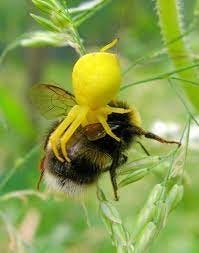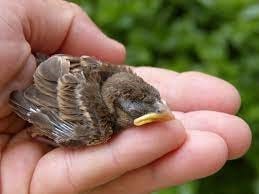Treading a Thin Line between Caring and Interfering
Environmental Conservation is about caring for the planet and its inhabitants. However, at times, there’s a thin line between caring and interfering.
We show our concern for declining numbers of wildlife, birds, and invertebrates by replacing monocultures, such as lawns, with a diverse selection of native flowers, trees, and shrubs. We also spread the word about how our actions affect other creatures sharing planet Earth.
We want everyone to understand that habitat fragmentation and destruction, the overuse of pesticides, pollution, and climate change need to be addressed and reduced NOW!
Most folks agree with the idea of planting native flowers and providing bushes and shrubs for caterpillars to munch on. Everybody loves butterflies, bees, and baby birds and wants to help our winged friends.
Unfortunately, that caring can lead to interfering when people step in to rescue an innocent bumblebee in the clutches of a crab spider.
STOP! Step back. Let it happen. This is all a part of nature’s plan.
There is a reason for having predators and prey. Birds, bats, wasps, spiders, dragonflies, ladybugs, and other bug-eating creatures need protein. They can’t survive on nectar alone. Unfortunately, a few good guys become dinner as well, but that can’t be helped.
When you first considered planting native flowers, the thought of providing food and shelter for the pollinators may not have included sacrificing some of the little insects. Of course, it’s not so disturbing when mosquitoes, gnats, spiders, or even ants are the victims. Yet, it takes them all — beneficials and pests, predators and prey to maintain Mother Nature’s balance.
Birds are big bug-eaters, especially caterpillars. They need lots of food to feed their babies. A chickadee needs something like 6,000 caterpillars to raise a family of four chicks. It’d take forever to feed their young with aphids, flies, and other small insects. They need the big, plump, juicy caterpillars filled with loads of nutrients, enzymes, and other good stuff for the babies to thrive.
I have seen posts declaring war on the birds that scoop up the caterpillars that people enjoy watching. Hopes of seeing the leaf chompers turn into a pupa and then witnessing a beautiful butterfly emerge from the chrysalis are dashed by the winged caterpillar snatchers. But, hey folks, that’s a part of the balance. So please, don’t feel compelled to protect the caterpillars. They don’t need it!
Another instance of helping/interfering comes when a person sees what appears to be an abandoned young bird. Being concerned, she bundles up the little thing, takes it home, places it in a box, and tries to nurture it. Again, her heart is in the right place, but she’s done more harm than good.
Instead of repeating that same mistake, look around and observe:
· Is the bird a nestling or fledgling? Nestlings are small and typically naked with pink skin and maybe a few fluffs. Fledglings are covered almost entirely in down and feathers and will hop around.
· If it’s a nestling - look for the baby’s nest in the nearby bushes or trees and simply put the chick back. The parents will resume care. Don’t worry about touching the little one. A bird’s sense of smell is not well-developed, and the parents will not abandon their baby. If a nest is not in sight, make a temporary one out of a small container lined with a dry cloth or straw. Place it as high as possible in a nearby tree. Whether it’s a natural nest or homemade, observe it for an hour to see if a parent returns. If they don’t, contact a wildlife rehabilitation center.
· If it’s a fledgling – leave it alone. It’s normal for a beginner to wander around under the watchful eye of their parents as a part of learning to fly. “Rescuing” the little guy and raising it yourself may result in the young bird mistaking humans for family and not developing correctly. In other words, it won’t know how to be a bird.
· If the nestling or fledgling appears injured, sick, or in danger - call a rehab facility, state wildlife agency, or veterinarian immediately. Indicators include: a fledgling unable to stand or hop normally, wet feathers even though it’s not raining, or lots of flies signaling an open wound. Also, if there’s a curious cat nearby…
· Do not feed – leave that for the professionals.
The main takeaway from this article is to work with nature and not interfere, even if you hate seeing a butterfly stalked by a dragonfly. Let nature take its course. This process has worked for countless generations and will continue to work as long as humans don’t interfere with Mother Nature’s balance.
Thank you for reading my article. Please use the buttons below to Like, Comment, Restack, and Share my post on Substack and other social media platforms.
All my articles are free, so I’d be grateful if you would Buy Me a Brownie to support my work and help spread our love for Mother Nature worldwide.






Nature almost always knows best. The only time I intervene is when I take a spider that has invaded my dwelling outside. Also, I was taught that birds will not accept babies back due to the smell so was glad to learn that is not the case. Thank you.